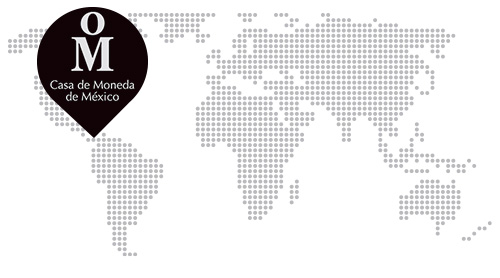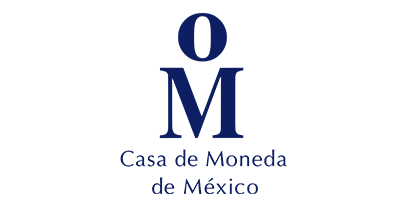Casa de Moneda de México | mint | www.metalmarket.eu
Casa de Moneda de México
History of creation
Spanish conquistador Hernan Cortes in 1519 led an expedition into what is now Mexico, conquered the Aztec empire and began prospecting the conquered territory for gold and silver deposits. In 1535, Antonio de Mendoza, by decree of the Spanish Crown, established the first mint in this part of the world, known today as the Casa de Moneda de Mexico or Mexican Mint.
In its early days, the mint minted the so-called Spanish dollar. It was a silver coin valued at 8 Spanish reals, which was widely used in trade almost all over the world - Europe, the Far East Oceania and the Americas. As a result, the Spanish dollar became the first world currency and contributed to the creation of many national currencies - including the m. in. uS dollar, Chinese yuan or Japanese yen.
The silver used to make the coin was imported from Portugal and Spain for years, but at some point this ceased to make economic sense.

The real breakthrough came with the discovery in 1592 of large deposits of silver in Mexico, which to this day place the country among the largest producers of this bullion in the world.
After independence in 1821, the mint's operations were severely threatened. Several smaller workshops operating throughout the country were spun off from one centralized mint in Mexico City. One of them was located in San Luis Potosi, where the Casa de Moneda de Mexico now operates.

Curiosity
Casa de Moneda de Mexico, also known as the Mexican Mint, is the national mint, responsible for minting all Mexican coins. Interestingly, it has an unusually long statement in this field, which is the envy of many a mint. Indeed, the origins of the mint date back to 1535, putting Casa de Moneda de Mexico among the oldest mints in the world. In both South America and North America, there is no other mint that can boast as long a history of existence.
The mint was built on the remains of Moctezuma's Black House (Casa Denegrida de Moctezuma), part of the royal palace where the last Aztec emperor meditated. Coin minting ceased at the site in 1850, and the former site of the mint was renamed the National Museum of Culture (Museo Nacional de las Culturas). Since 1983, the production of coins has taken place exclusively in San Luis Potosí.

Production volume
However, to get an idea of just how large a production we're talking about, it's worth noting that last year alone, the Mexican Goddess of Liberty was minted in silver in nearly 0.5 million pieces, of which 450,000 pieces went to the 1 oz silver bullion coin. For comparison, in 2016 alone, the one-ounce variant of the coin was minted in more than 1.4 million pieces. In much smaller volumes, the coin is minted in gold - last year the production volume in all size variants reached only a few thousand copies.
However, to get an idea of just how large a production we're talking about, it's worth noting that last year alone, the Mexican Goddess of Liberty was minted in silver in nearly 0.5 million pieces, of which 450,000 pieces went to the 1 oz silver bullion coin. For comparison, in 2016 alone, the one-ounce variant of the coin was minted in more than 1.4 million pieces. In much smaller volumes, the coin is minted in gold - last year the production volume in all size variants reached only a few thousand copies.

In its long history, the mint has exported its products to many countries, on all continents - m. in. to Germany, USA, Switzerland, Argentina, Peru, Portugal, Egypt, Thailand or Guatemala.
Popular products
Although coins minted in Mexico are not overly popular, undoubtedly the extremely long and colorful history of the local mint attracts the attention of potential investors and collectors.
The most popular Casa de Moneda de Mexico bullion coin is undoubtedly the Mexican Libertad, which debuted in a gold version in 1981 and a silver version in 1982. It is still beaten to this day and comes in many size variants. The obverse of the coin is decorated with the coat of arms of Mexico, an image of an eagle holding a snake in its beak. The reverse depicts a statue of the winged Mexican Goddess of Liberty against a background of mountain peaks. Interestingly, the coin does not have a minted denomination, but is a full-fledged means of payment within Mexico.

